The Caracal (Felis caracal)
The Caracal (Felis caracal): is a medium-sized wild cat that can run up to 50 miles per hour. It is also capable of leaping into the air and knocking down (10-13) birds at once. The name caracal is derived from a Turkish word “Karakulak” meaning “black ear”. The old saying “to put the cat amongst the pigeons” stems from an old middle east practice of putting a caracal in an arena. This was with a flock of pigeons and taking bets how many the caracal can catch once it is released. A caracal’s black, tufted ears gives it a different look from most cats in the wild. In addition, its speed and ability to leap into the air makes it an excellent hunter.
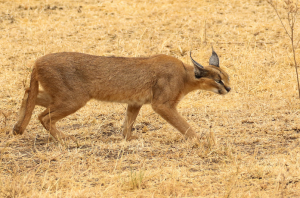
Appearance
A large, rufous-fawn cat with tufted black ears, creamy underbelly with faded orange spots and long legs. The face has exquisite markings, and its regarded as one of the most beautiful cats in the world. It moves with grace and a sense of confident and power. Besides, it’s an expert climber and regularly takes refuge in trees.
Size
From head to tail, the caracal measures 33-48 inches (83-123 centimeters) including their tail. They are known to be the heaviest of the small African cats weighing from 9.5 to 18 kilograms. The males are generally larger than females.
Habitat
Caracals live in the drier savannah and woodland regions of sub-Saharan Africa and prefer the scrubbier arid habitats. They will also inhabit evergreen and montane forests but are not found in tropical rainforests.
Communication
They make a variety of mews, hisses and growls to express their mood just like other cats. Caracals are usually silent but can cry out like a leopard if need be. In addition to that, they make a “wah-wah” sound when they seem to be uneasy. Furthermore, they have got scent glands between their toes and face which is used to get a message across. They can also sharpen their claws on a tree and mark their territory visually and will scent at the same time. The scent basically serves to keep other caracals away or even to indicate a willingness to breed.
Social structure
The social system of the caracal is not well understood thou they are primarily solitary or live as mated pairs. Besides, individuals appear to defend territories which they mark with urine.
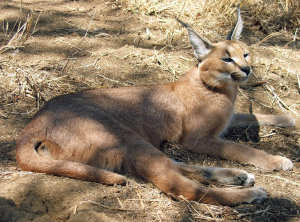
Behavior
This animal is the mostly nocturnal, secretive, solitary and aggressive. Being hunted as a problem animal by farmers, caracals became even more elusive and thus sighting one is very difficult.
Breeding
In most parts of its range, the caracal has no set breeding period. Interestingly, a female may often mate with up to 3 males. The litter size varies between (1-6) kittens, which are born after a gestation period of approximately 78 days. The kittens have a daily weight gain of approximately 12g per day. Although they reach maturity at about (16-18) months of age, they are often independent from about 12 months.
Reproduction
These caracals keep to themselves until it’s time to mate. One of the most unique caracal sounds is a mating call that sounds sort of like a cough. However, several male caracals may fight or compete for the attention of one female caracal. Eventually, it chooses a male out of the group. After mating, the male leaves the female caracal such that she can raise the babies on her own.
Babies
A female caracal carries her babies (kits) for about 69 to 81 days. She finds an old den or burrow where she can give birth away from the predators and other threats. They can also have from 1 to 6 kits although most have just 2 kits. A caracal kit is about the size of a pet hamster and are born with their eyes just like the domesticated kittens. However, it takes about 6 to 10 days for a kit’s eye to completely open. In fact, they are able to squirm around but can’t see where they are going. These kits start nursing and eating meat at 10 weeks old. Later, they learn hunting skills from their mother and stay with her until they are about 10 months old.
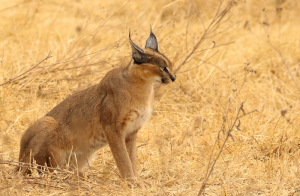
Lifespan
The average lifespan for both female and male caracals is 12 years old in the wild. However, caracals kept in the zoo can live up to 17 years. This is because they are not threatened by predators, receive food on a daily basis and also get medication when needed. As it ages in the wild, it can become ill from untreated skin infections and other infectious diseases due to injuries. Just like domestic cats, a caracal can get rabies from other animals leading to death.
Diet
The caracals are strictly carnivorous, and they prey primarily on birds, rodents and small antelopes. Just like most cats, caracals stalk their prey before pouncing on it and in areas of human settlement, these cats sometimes eat poultry. They sometimes store the remains of their prey in the forks of trees or even in dense bushes later returning for further feeding. Furthermore, they are supremely acrobatic and can leap agilely into the air to bring down prey.
Facts about caracals
- Caracals are known on occasion to store their kills in trees, in the manner of leopards. In fact, this habit is likely to occur in areas with a high density of hyenas.
- The caracal is the origin of the expression “put the cat among the pigeons”. In ancient India and Iran, trained caracals were released into arenas containing a flock of pigeons. Here, wagers were then placed on how many birds the cat would take down in a leap.
- These animals are capable of taking small, domestic livestock and thus suffer heavy persecution from farmers. From 1931 to 1952, an average of 2,219 caracals per year were killed in control operations in South Africa’s Karoo.
Where are caracals found?
Generally caracals live in woodlands, savannahs and in scrub forests. If you can to see them in Uganda, caracals are only found in Kidepo valley national park.

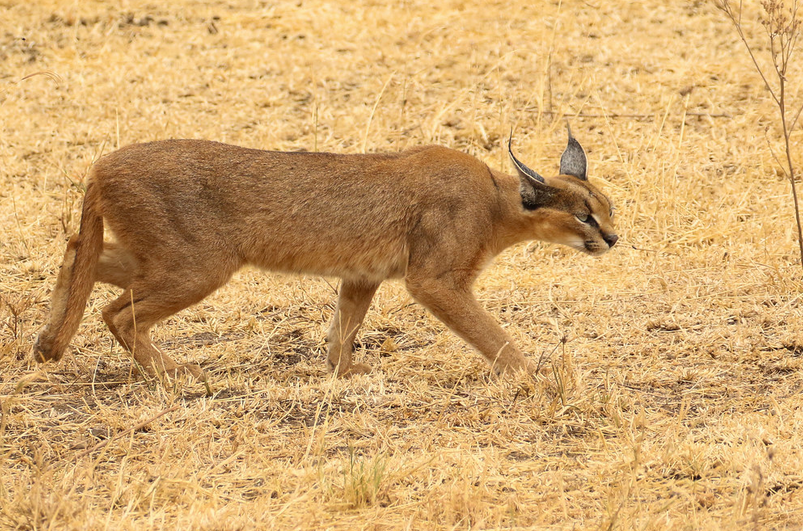

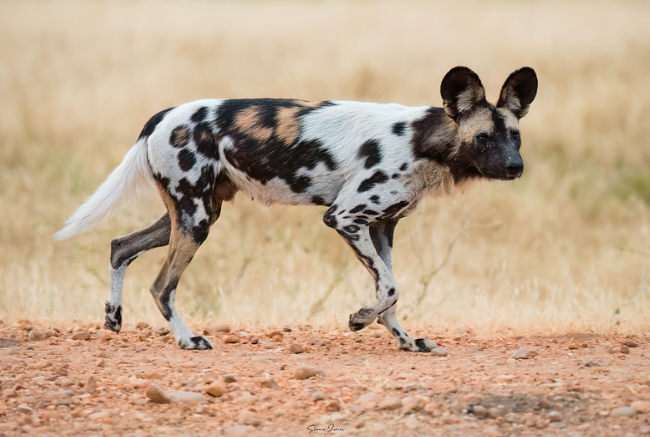









1 Comment
Thanks for the article!